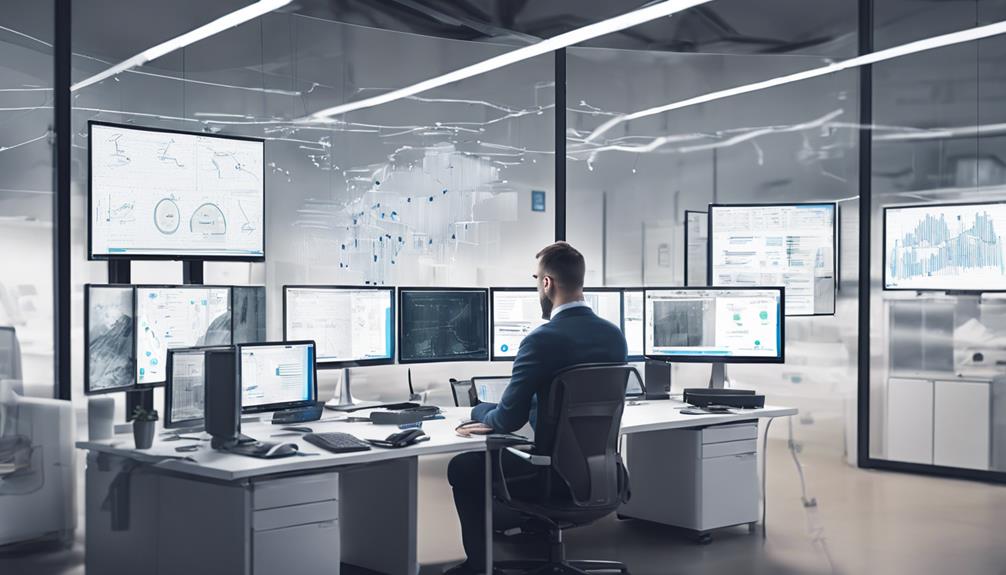If you're facing the "No Resource" problem with your Hikvision devices, it's essential to address potential overload or misconfigurations. Start by checking device connections and ensuring your firmware is updated. Properly configure settings to balance bandwidth and processing power, as too many high-resolution streams can strain your system. Evaluate user permissions to avoid unnecessary access that could overload resources. If issues persist, consider resetting the device to restore default settings or seek expert advice for tailored solutions. Each of these steps can enhance performance, and further insights can help you troubleshoot effectively.
Understanding the "No Resource" Error
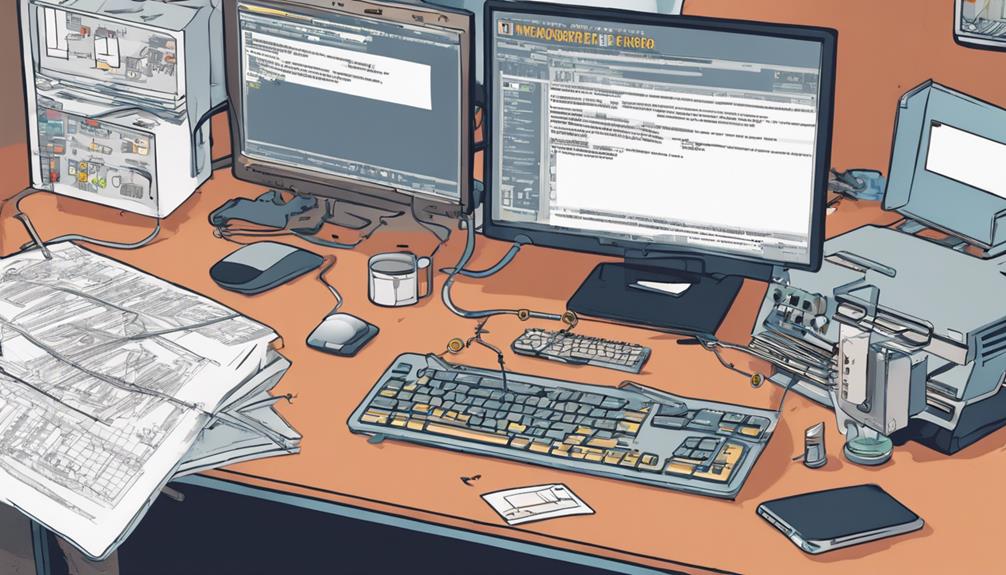
When you encounter the "No Resource" error in Hikvision devices, it typically indicates a failure in the system to allocate necessary resources for operation. This error is particularly critical in environments where surveillance and monitoring are paramount, as it directly impacts the device's ability to function effectively. Understanding the mechanics of error handling and resource management in this situation is essential for troubleshooting.
Resource management involves the effective distribution of system capabilities, including bandwidth, processing power, and memory. When these resources are insufficient or improperly allocated, it can lead to the "No Resource" error. This is often seen in situations where multiple streams or high-resolution video feeds are being processed simultaneously, overwhelming the device's capacity.
To address this issue, you must first evaluate the configuration settings and verify that resources are appropriately allocated for the tasks at hand. Implementing effective error handling procedures can help identify and mitigate these resource allocation failures before they escalate. Ultimately, understanding this error allows you to enhance system stability, verifying that your Hikvision devices operate seamlessly and provide the freedom of reliable surveillance.
Common Causes of the Issue
Several underlying factors can contribute to the "No Resource" error in Hikvision devices. One common cause is camera overload. When too many cameras are connected simultaneously, it can exceed the device's processing capabilities. Each camera consumes a specific amount of bandwidth and processing power, and if you exceed the system's capacity, you'll encounter resource limitations.
Another factor is improper configuration settings. If the resolution or frame rate for your cameras is set too high, it can strain the system. High-definition video streams require more resources, which can lead to performance issues. Additionally, if video analytics or other resource-intensive features are enabled for multiple cameras, it can further exacerbate the problem.
Network issues may also play a role. If your network isn't able to handle the data flow from all connected devices, it can create bottlenecks that lead to resource errors. Finally, firmware or software limitations can restrict the number of devices your system can effectively handle. Understanding these common causes is essential for troubleshooting and ensuring your Hikvision devices operate smoothly without resource errors.
Initial Troubleshooting Steps
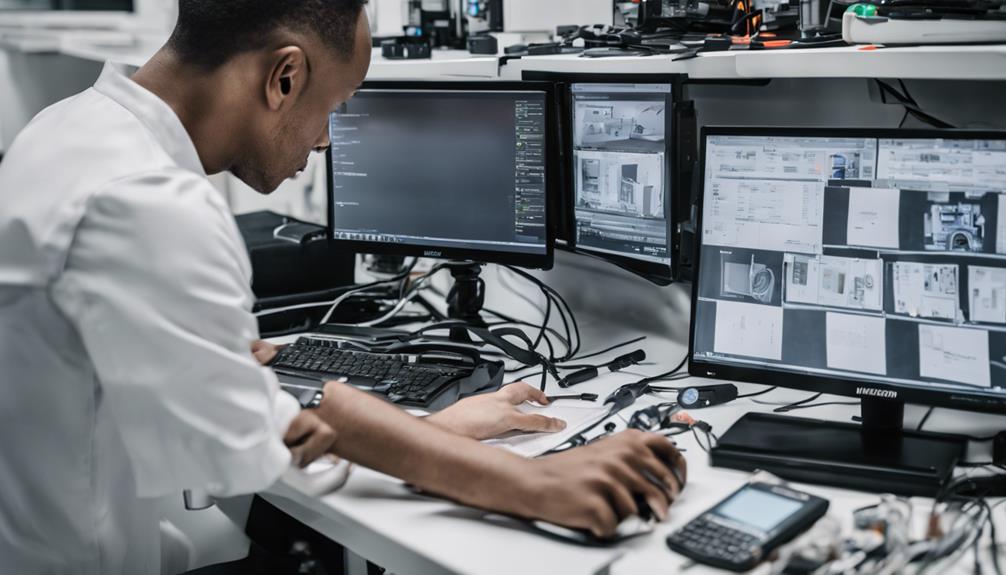
To begin resolving the resource issue with your Hikvision device, you should first check all device connections to guarantee they are secure and functioning properly. Next, verify that your firmware is up to date, as outdated software can lead to performance problems. Addressing these two areas will help you pinpoint potential causes before exploring more complex solutions.
Check Device Connections
Before diving into more complex troubleshooting methods, it's essential to check the device connections, as many issues stem from simple connectivity problems. Ensuring that your Hikvision devices have stable connections can greatly enhance overall performance and resolve many resource-related concerns. Here are three steps to help you assess your device connections:
- Inspect Physical Connections: Verify that all cables—power, Ethernet, and video—are securely connected. Loose cables can lead to intermittent power or data loss, severely impacting device compatibility.
- Check Network Configuration: Make sure that your devices are properly configured within your network. An unstable network can cause communication errors, so confirm IP addresses and subnet masks align correctly to maintain connection stability.
- Test Different Ports: If you're experiencing issues, try connecting your device to a different port on your switch or router. This can help you determine if the problem lies within the device itself or the specific port being used.
Verify Firmware Updates
Making sure your Hikvision devices are running the latest firmware is vital for peak performance and security. Outdated firmware can lead to compatibility issues, vulnerabilities, and diminished functionality. Start by checking the current firmware version on your device; you can typically find this in the device settings or administration panel.
Next, visit the Hikvision support website to identify the latest firmware available for your specific model. Be certain to review the release notes to understand changes, improvements, and any potential impacts on firmware compatibility with your existing systems. It's important to evaluate the update frequency; regular updates are often an indicator of ongoing support and security enhancements.
When you decide to update, make certain that you follow the manufacturer's guidelines closely. Backup your configurations before proceeding, as firmware updates can sometimes reset settings. After applying the update, monitor the system's performance to verify everything functions as expected. If problems persist, you may need to think about rolling back to a previous version that was stable for your setup. By verifying and updating your firmware, you enhance your system's reliability and security, empowering you to maintain control over your Hikvision devices.
Checking Device Connections
Checking device connections is a critical step in troubleshooting and optimizing your Hikvision system. Verifying that all components are properly connected can prevent resource issues and enhance overall system performance. Start by checking device compatibility; not all Hikvision devices work seamlessly together, so it's vital to confirm that your cameras, recorders, and other peripherals are designed to function in harmony.
To streamline the process, consider these connection types:
- Wired Connections: Verify your Ethernet cables are securely plugged in and check for any damage that could disrupt data transmission.
- Wireless Connections: For Wi-Fi-enabled devices, check that they're connected to the correct network and that the signal strength is sufficient to support stable performance.
- Power Supply: Confirm that each device is receiving adequate power. A weak or interrupted power supply can lead to disconnections or performance degradation.
Updating Firmware and Software
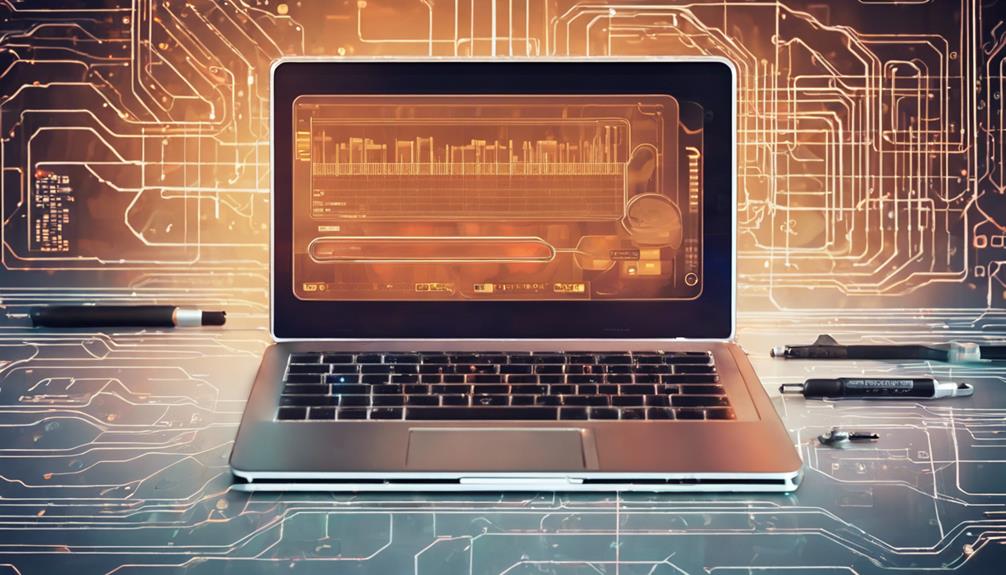
Updating firmware and software is a vital aspect of maintaining the reliability and functionality of your Hikvision system. Regular updates guarantee that you're leveraging the latest enhancements and security patches, which in turn aids in software optimization. Neglecting these updates can lead to issues such as reduced performance or firmware compatibility problems, hindering the system's overall effectiveness.
To manage updates effectively, consider the following:
| Action | Description |
|---|---|
| Check for Updates | Regularly visit Hikvision's official website to find the latest firmware and software versions. |
| Backup Current Settings | Before applying updates, back up your current configurations to avoid data loss in case of failure. |
| Review Release Notes | Understand the changes and improvements made in the new version, verifying it meets your needs. |
Adjusting Network Settings
Adjusting your Hikvision system's network settings is vital for ideal performance and security. By fine-tuning these settings, you can achieve better network optimization and effective bandwidth management, guaranteeing your system operates smoothly without interruptions. Here are three significant steps to take into account:
- IP Configuration: Verify that your Hikvision devices have static IP addresses to prevent conflicts and maintain consistent connectivity. This step is fundamental for reliable performance.
- Quality of Service (QoS): Implement QoS settings in your router to prioritize video streams from your Hikvision cameras. This way, you can allocate sufficient bandwidth for surveillance feeds, minimizing lag and buffering.
- Port Forwarding: If you're accessing your system remotely, configure port forwarding to allow external devices to communicate with your cameras. This helps maintain secure and efficient access while optimizing network performance.
Reviewing User Permissions
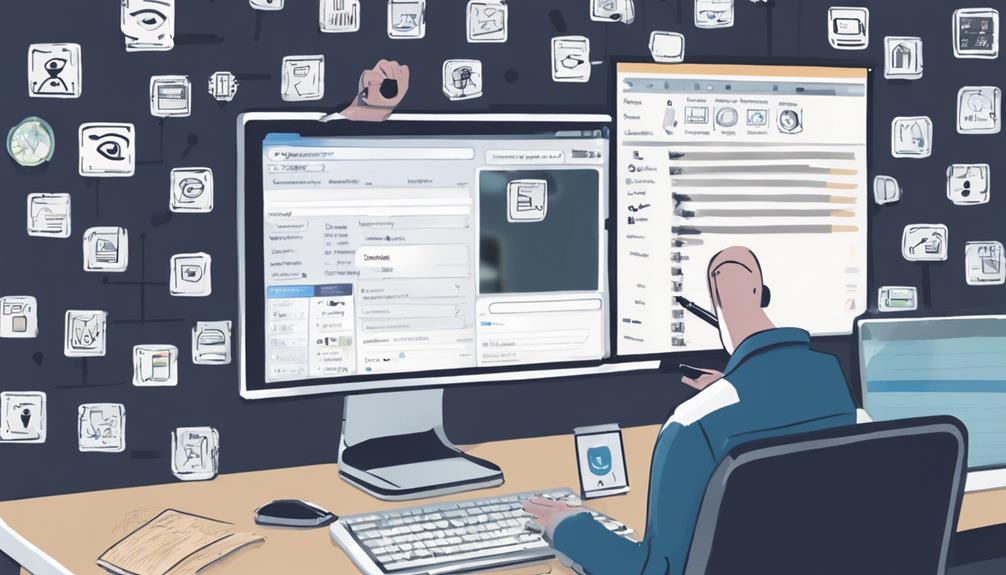
Securing proper user permissions is essential for maintaining the security and functionality of your Hikvision system. By reviewing user roles and permission levels, you can establish effective access control that aligns with your organization's security protocols. Start with user management to organize your user groups, making sure each member has appropriate account privileges that match their responsibilities.
Conduct regular permission audits to identify any discrepancies in access rights. This practice will help you pinpoint users with excessive access, which could pose a risk to your system's integrity. When assigning roles, be meticulous; confirm that each user's role assignment reflects their needs without compromising the overall security of the system.
Utilizing granular permission levels allows for tailored access that can enhance security without sacrificing efficiency. By monitoring user activity and adjusting permissions as necessary, you can maintain a dynamic environment that responds to changing security needs. Remember, the freedom you desire in managing your Hikvision system hinges on a well-structured permission framework that mitigates risks while empowering users to perform their tasks effectively. Regularly reviewing these elements will help you achieve a secure and functional surveillance environment.
Resetting the Device
How do you restore your Hikvision device to its original settings when troubleshooting issues? You've got two main options: a soft reset or a factory reset. A soft reset is less disruptive, allowing you to resolve minor glitches without losing your configurations. On the other hand, a factory reset wipes everything clean, reverting your device to its out-of-the-box state—ideal for more severe problems.
Here's how to proceed:
- Soft Reset: Locate the reset button on your device. Press and hold it for about 10 seconds. This process reboots the system while retaining your settings.
- Factory Reset: Access the device's web interface. Navigate to the settings menu, find the "Restore Default" option, and confirm your choice. This will erase all custom settings, so verify you've backed up any essential configurations beforehand.
- Verification: After performing either reset, check the device functionality. Reconfigure settings if necessary, particularly if you opted for the factory reset.
Seeking Professional Assistance
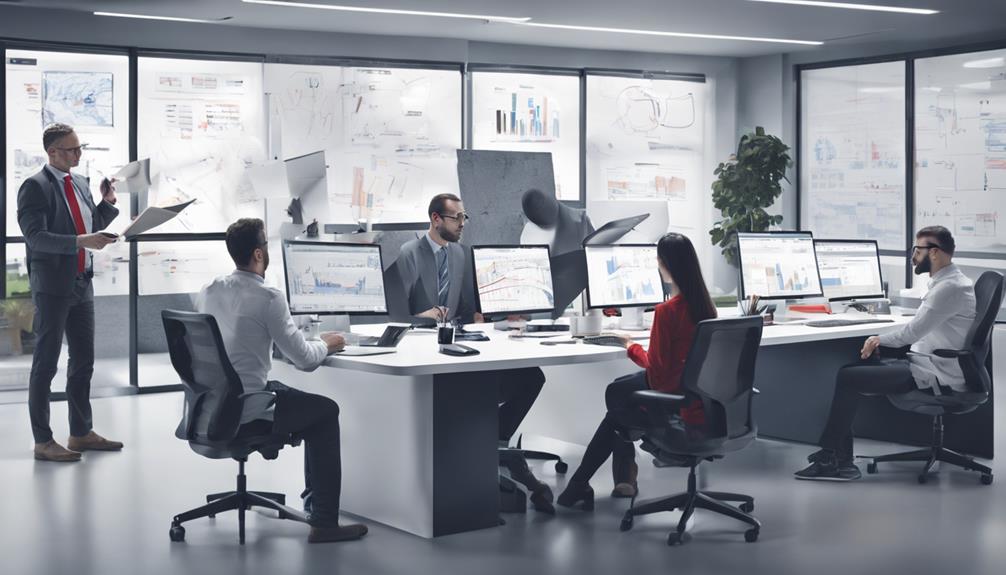
When managing Hikvision devices, it's essential to understand the resource limitations that can impact performance and functionality. Seeking professional assistance can provide you with targeted insights and solutions that enhance system efficiency. By leveraging expert help, you can address specific issues and optimize your setup for better overall results.
Understanding Resource Limitations
Understanding the limitations of resources in any technological environment, including systems like Hikvision, is essential for effective management and deployment. To optimize your system, you need to acknowledge both resource management challenges and hardware limitations. By grasping these constraints, you can make more informed decisions that enhance performance and reliability.
Here are three key areas to examine:
- Processing Power: Confirm that your hardware can handle the demands of your video surveillance needs. Insufficient processing power can lead to lag and reduced functionality.
- Storage Capacity: Evaluate your storage solutions to accommodate the volume of data generated. Inadequate storage can result in data loss or hinder system performance.
- Network Bandwidth: Assess your network infrastructure. Limited bandwidth can severely impact video quality and real-time accessibility, leading to inefficiencies in surveillance operations.
Benefits of Expert Help
Engaging with expert help can greatly enhance the performance and reliability of your Hikvision system, often yielding results that are difficult to achieve independently. By seeking expert consultation, you gain access to specialized knowledge that can pinpoint issues and optimize your configuration for better functionality.
Additionally, technical training from professionals guarantees that you and your team can effectively utilize the system, maximizing its capabilities while minimizing potential risks.
| Service | Benefits |
|---|---|
| Expert Consultation | Identifies specific issues, provides tailored solutions |
| Technical Training | Empowers users, enhances operational efficiency |
| Ongoing Support | Guarantees system longevity, addresses evolving needs |
Utilizing these services not only resolves immediate challenges but also fosters a culture of continuous improvement. You'll find that the investment in expert assistance pays off in reliability, security, and user confidence. Ultimately, you're not just maintaining a system; you're enhancing your operational freedom through informed decision-making and proactive management. Embrace the opportunity for growth and elevate your Hikvision experience with professional expertise.
Preventive Measures for Future Issues
To mitigate potential resource issues in the future, organizations must adopt a proactive approach that emphasizes regular system assessments and updates. This strategy not only enhances resource allocation but also guarantees efficient performance of systems like Hikvision. By implementing proactive monitoring and maintaining an agile response to emerging challenges, you can safeguard against disruptions.
Here are three key preventive measures to take into account:
- Scheduled System Audits: Regularly assess your systems to identify bottlenecks or underutilized resources. This practice will allow you to fine-tune your resource allocation and optimize performance.
- Real-Time Monitoring Tools: Utilize advanced monitoring solutions that provide insights into system usage and performance metrics. These tools enable you to detect anomalies early and take corrective action before they escalate.
- Training and Development: Equip your team with the necessary skills to manage and troubleshoot systems effectively. By fostering a culture of continuous learning, you guarantee that your organization is resilient and capable of maneuvering future challenges.
Adopting these measures will position your organization to respond effectively to potential resource issues while maintaining operational integrity.
Frequently Asked Questions
What Devices Are Compatible With Hikvision Systems?
When considering Hikvision device compatibility, you'll find many third-party cameras and NVRs work well. However, be mindful of network integration challenges; ensuring seamless communication often requires specific configurations and firmware updates for ideal performance.
Can I Use Third-Party Software With Hikvision Cameras?
Imagine a puzzle piece that doesn't fit. While third-party software can enhance integration benefits, it often encounters software limitations with Hikvision cameras. Careful selection guarantees peak performance without compromising your system's reliability or functionality.
What Should I Do if the Issue Persists After Troubleshooting?
If the issue persists despite initial troubleshooting, you should consider advanced troubleshooting techniques and resource optimization. Evaluate your system's performance metrics and configurations, ensuring all settings align with ideal operational standards for maximum efficiency.
How Often Should I Update My Hikvision Firmware?
You should update your Hikvision firmware every few months for ideal performance. Regular updates enhance security and features, ensuring you benefit from the latest advancements. Staying current minimizes vulnerabilities and maximizes system reliability for your freedom.
Is There a Warranty for Hikvision Products?
Yes, Hikvision offers warranty terms that vary by product. Typically, you'll find coverage for defects in materials or workmanship. Always check specific product documentation to understand the exact Hikvision product coverage and warranty duration.
